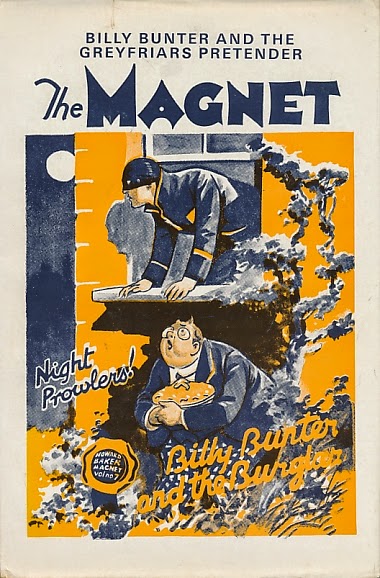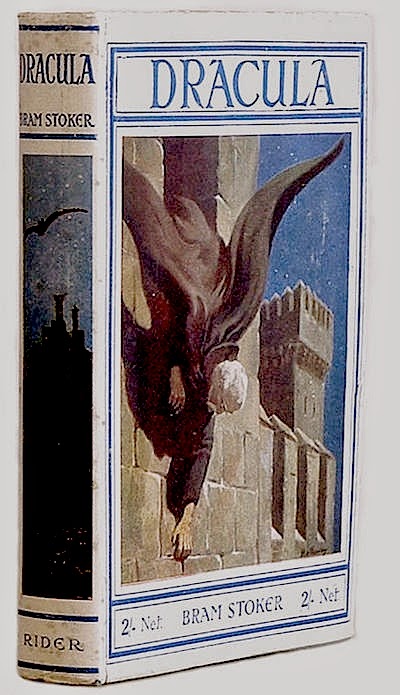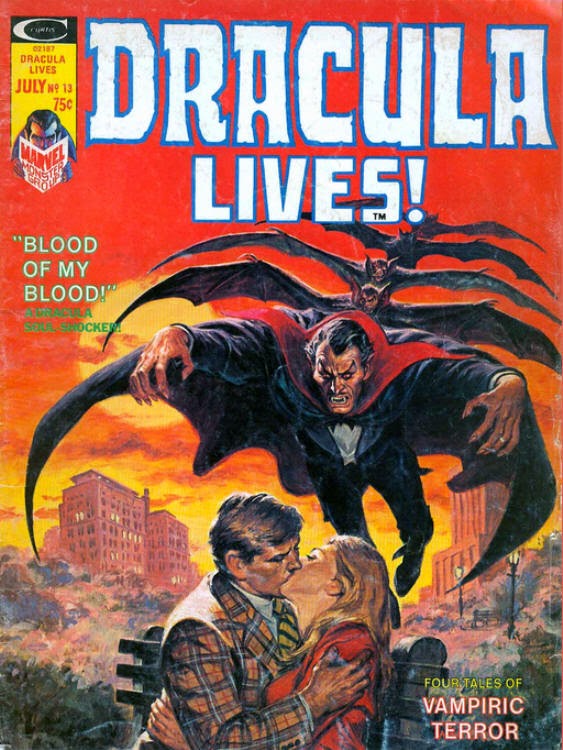From the Peter Haining papers, this typed manuscript outline of a Billy Bunter vampire story by the great researcher and expert on British comics and periodicals W.O.G. Lofts (1923-1997). He wrote a book on the Bunter author Frank Richards and another on Charteris's The Saint. This story project appears not to have been taken up by The Magnet.…Count von Alucard sounds familiar…
To: The Editor (C. M. Down Esq)
The Magnet
Fleetway House
Farringdon Street
The Vampire at Greyfriars. - Rough Sypnosis.
A new boy arrives in the Remove from a titled family in Eastern Europe. He is strange looking with jet black hair in a windows peak, orange eyes, with large incisor teeth that gives him a wolfish look. Dressed in a long black cloak over his school uniform Count Von Alucard is indeed a very lone wolf. When Bunter tries to tap the new boy for a loan he gives him such an evil look that the Fat Owl of the Remove makes a hasty retreat. With his white drained face Alucard is a very strange fellow indeed to be sharing a study with Herbert Vernon-Smith and Redwing.
Continue reading





